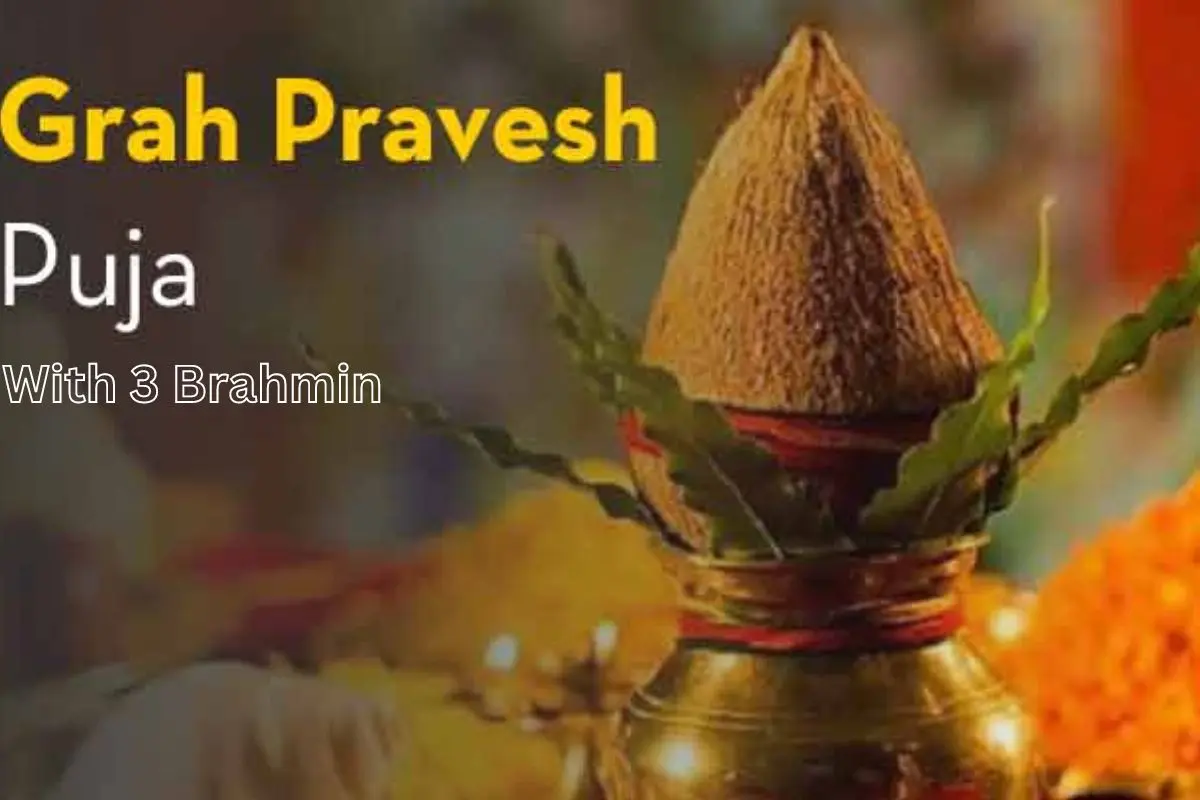
In Indian culture, the home is not just a place to live but a sanctuary where the family’s well-being is nurtured. Grah Pravesh Pooja is performed to invoke the blessings of the deities and purify the space from any negative energies that might have accumulated during the construction phase. This pooja is believed to create a protective shield around the house and its inhabitants, ensuring harmony, health, and prosperity.
Timing is crucial in Indian rituals, and Grah Pravesh Pooja is no exception. The pooja is performed during an auspicious time, or muhurat, as determined by an astrologer. The alignment of stars and planets is believed to significantly influence the outcomes of the ceremony. Choosing the right muhurat ensures that the family receives maximum benefits from the ritual.
There are three main types of Grah Pravesh ceremonies:
In Hindu rituals, the number three holds significant spiritual importance. It represents the three fundamental aspects of existence—creation (Brahma), preservation (Vishnu), and destruction (Shiva). Having three Brahmans perform the Grah Pravesh Pooja is symbolic of invoking these divine forces to bless the new home with creation, preservation, and protection.
Each Brahman plays a specific role in the ceremony, from chanting Vedic hymns to performing the havan (sacred fire ritual). The collective energy and knowledge of three Brahmans amplify the spiritual impact of the ceremony, ensuring that the home is blessed with peace, prosperity, and divine protection.
Ganesh Pooja: The ceremony begins with a prayer to Lord Ganesha, the remover of obstacles. This ensures that the new home is free from any hindrances or negative influences.
Kalash Sthapana: A copper pot filled with water, adorned with mango leaves and a coconut, is placed at the entrance of the home. This symbolizes the presence of divine energy and is believed to attract positive vibrations.
Navagraha Pooja: The nine planetary deities are worshipped to seek their blessings and ensure that the home is under favorable planetary influences.
Vastu Shanti Pooja: This is performed to appease the Vastu Purusha, the deity who presides over the land and the building. It ensures that the home is harmonious with the natural elements and cosmic forces.
Havan: The sacred fire ceremony is conducted to purify the home. The smoke from the havan is believed to cleanse the environment and drive away any negative energies.
Aarti: The ceremony concludes with an aarti, where a lit lamp is circled around the house to spread positive energy.
In Hinduism, Grah Pravesh is more than just a ritual; it is a way of life. The ceremony is a means to seek the blessings of the deities for the well-being of the family. The Vedas, which are the oldest sacred texts in Hinduism, provide detailed guidelines for performing the pooja. The presence of three Brahmans is seen as an embodiment of the trinity of Brahma, Vishnu, and Shiva, ensuring that the home is blessed with their divine presence.
Jain traditions also emphasize the importance of Grah Pravesh. However, Jains focus more on the principles of non-violence and simplicity. The pooja is performed to purify the home and ensure that it becomes a place of peace and non-violence. Jains prefer to have three Brahmans or priests to perform the rituals, as it aligns with their belief in the trinity of right faith, right knowledge, and right conduct.
In Buddhism, the concept of Grah Pravesh is slightly different. While traditional rituals like Vastu Shanti are not common, Buddhists focus on mindfulness and meditation to purify the home. The ceremony is often led by monks who chant prayers to invoke peace and harmony in the household. Having three monks or spiritual leaders perform the ceremony is considered auspicious, as it represents the three jewels of Buddhism—the Buddha, the Dharma, and the Sangha.
In India, Grah Pravesh Pooja is widely practiced across different states and communities. Each region has its own unique customs and traditions associated with the ceremony. In the north, the focus might be more on Vedic rituals, while in the south, the emphasis could be on appeasing local deities and spirits. Regardless of regional differences, the underlying belief in invoking divine blessings for the new home remains the same.
With the Indian diaspora spread across the globe, Grah Pravesh Pooja has gained international significance. Indians living abroad often invite Brahmans from India to conduct the ceremony, ensuring that the rituals are performed according to traditional practices. The pooja has also gained popularity among non-Indians who are drawn to the spiritual and cultural aspects of the ritual. International keywords like "Housewarming Pooja," "Vedic House Blessing," and "Traditional Indian Home Ceremony" are commonly searched online, indicating a growing interest in this ancient practice.
Grah Pravesh Pooja is a profound ritual that transcends mere tradition, offering a spiritual foundation for a new beginning. By engaging three Brahmans to perform the ceremony, the homeowners are not only adhering to ancient customs but also ensuring that their home is blessed with the highest spiritual energy. Whether in India or abroad, the significance of Grah Pravesh continues to resonate, making it an integral part of Indian culture and spirituality.

Promoting this service with effective SEO strategies will ensure that more people can connect with the rich traditions of Grah Pravesh Pooja and experience the blessings of a harmonious and prosperous home.
Book your personalized astrology reading today and start uncovering the hidden treasures within yourself!